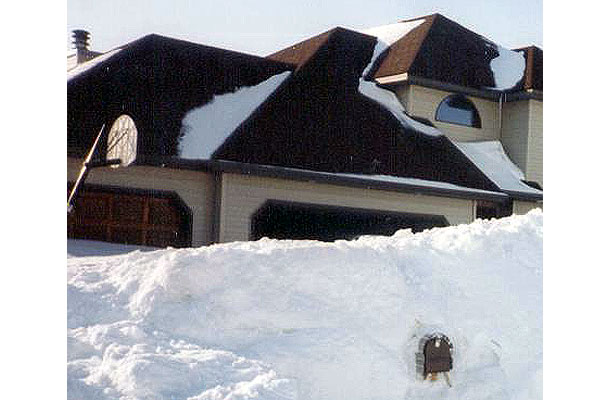It’s important to be ready for the cold to arrive as it can be tougher to deal with once it has.
If you live in an area subject to subzero temperatures and snow like North Dakota, which experiences an average of 50 days below 0 in its southwest section, you'll want to prepare for the cold weather well before it hits.
Even if you purchased one of the Oklahoma City houses for sale where low temperatures average 27 to 31 degrees Fahrenheit, it's still important to be ready for the cold to arrive as it can be tougher to deal with once it has.
Stock up
Be sure you have at least a few days of water and nonperishable foods stocked up in case the power goes out, as ice or snow can result in power outages, even if there isn't a full-on blizzard. You'll also want at least a three-day supply of any necessary medicines like inhalers or insulin, pet food, and other supplies, including plenty of blankets, firewood, long-burning candles, flashlights with extra batteries, etc.
Protect your pipes
When water freezes, it expands, so the last thing you want to have happen is water freezing inside the pipes in and around your home. When it's extremely cold, you should run a trickle of water on all faucets run on pipes exposed to the elements. If you go on vacation or leave for an extended period for any reason, set the temperature on your thermostat to at least 55 degrees Fahrenheit. Consider insulating any pipes that are exposed by using insulating sleeves and heat tape as well.
Even after turning off outdoor spigots, keep in mind that water lingering in an attached hose can freeze, causing pipes behind the spigot to burst. That means you'll also want to drain and disconnect all hoses when using them just before or when cold weather hits.
Prune tree branches
As a winter storm can result in heaps of tree branches on your roof, which can snap under the weight of ice or snow, piercing holes and loosening shingles, be sure to prune branches that are hanging over your house and use a rake to clear off any that fall onto the roof. Make sure to visualize your roof to secure protection from falling branches.
Seal any openings
If you have drafty windows or doors, it will bring the cold in and send the heat out, which results in high utility bills. Be sure to apply weatherstripping or caulk to those areas between window frames, door frames, and walls to maximize comfort and save as much as 10 percent on your energy costs. This will also help prevent melted snow or ice from rotting the exterior.
Make sure your chimney and fireplace are good to go
Before the first chill hits the air and you start thinking about building a fire in your fireplace, you'll want to make sure your chimney has been cleaned and inspected to keep your home and family safe. It should be inspected once a year, and fall is the ideal time to do it. When it hasn't been used for a long time, birds and other creatures can build nests inside, which may clog the chamber or flue. During an inspection, any problems can be corrected, such as deteriorating liner materials and masonry too.


























































































































































































































